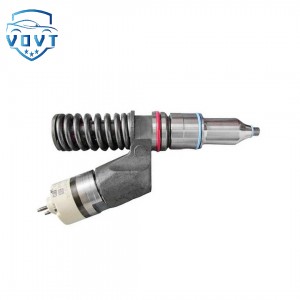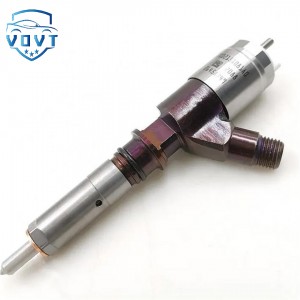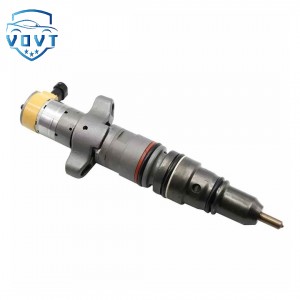New High Quality Diesel Injector 236-0957 242-0857 245-3516 254-4339 254-4340 For CAT C9
Products Description
| Reference. Codes | C9 |
| Application | C9 |
| MOQ | 4PCS |
| Certification | ISO9001 |
| Place of Origin | China |
| Packaging | Neutral packing |
| Quality Control | 100% tested before shipment |
| Lead time | 7~10 working days |
| Payment | T/T, L/C, Paypal, Western Union, MoneyGram or as your requirement |
Study on the relationship between injector cleaning frequency and engine performance stability
Research background
During the operation of automobile engines, the injector is the core component of the fuel injection system, and its working state directly affects the performance of the engine. With the increase of vehicle usage time and mileage, the injector is susceptible to impurities, colloids in the fuel, and carbon deposits produced by combustion, resulting in problems such as nozzle blockage and uneven fuel injection. Regular cleaning of the injector is considered to be an important means to maintain its good working condition, but too high a cleaning frequency may lead to unnecessary cost expenditures and potential damage to the injector itself, while too low a cleaning frequency cannot solve the problem of injector performance degradation in time, thereby affecting the stability of the engine. Therefore, it is of great practical significance to clarify the relationship between the frequency of injector cleaning and the stability of engine performance.
Experimental design
Selection of experimental vehicles: Select multiple vehicles of the same model, displacement, similar age and mileage as experimental objects to ensure the consistency of the experimental basic conditions and reduce the interference of individual differences in vehicles on the experimental results.
Cleaning frequency setting: Divide the experimental vehicles into several groups, and set different injector cleaning frequencies for each group. For example, the first group is cleaned every 5,000 kilometers, the second group is cleaned every 10,000 kilometers, the third group is cleaned every 15,000 kilometers, and so on. At the same time, a control group is set up without additional cleaning, relying only on the fuel system maintenance in the normal maintenance of the vehicle.
Performance index monitoring: During the experiment, professional automobile testing equipment is used to regularly monitor the engine performance indicators of each vehicle. The main monitoring indicators include:
Power output stability: The power and torque output of the engine at different speeds and loads are tested by a dynamometer to observe its fluctuations. The stability of power output directly reflects the smoothness of the engine's operation. Unstable power output may cause problems such as vehicle acceleration setbacks and driving jitters.
Idle stability: Measure the speed fluctuation range of the engine at idle speed. Under normal circumstances, the engine idle speed should remain relatively stable. If the injector works abnormally, it may cause unstable idle speed and fluctuating speed, affecting driving comfort.
Fuel consumption: A fuel consumption meter is used to record the fuel consumption of the vehicle under the same driving conditions (such as urban roads, highways, etc.). Poor injector performance may lead to excessive or insufficient fuel injection, which in turn affects fuel economy. Increased fuel consumption not only increases the cost of use, but also indirectly reflects the decline in engine performance.
Cleaning method and cleaning agent selection: The injectors of all vehicles are cleaned using a professional non-disassembly cleaning method, using reliable and certified injector cleaning agents on the market. Ensure the standardization of the cleaning process to avoid the impact of differences in cleaning methods and cleaning agents on the experimental results.
Analysis of expected results
Power output stability: It is expected that the stability of engine power output will gradually increase with the increase in cleaning frequency. In the group with a higher cleaning frequency, the injector can maintain a good injection effect, the fuel and air are mixed evenly, and the combustion is sufficient, so that the engine can output stable power and torque under various working conditions. In the group with a lower cleaning frequency, due to the gradual blockage of the injector and the poor fuel injection, the power output fluctuation may increase, especially under high load conditions, the lack of power and fluctuation may be more obvious. The control group may have the worst power output stability due to the long-term lack of special injector cleaning.
Idle stability: For vehicles with a reasonable cleaning frequency, the engine idle speed fluctuation range should be small and the idle speed should be stable. This is because the cleaned injector can accurately control the injection amount, so that each cylinder works evenly, reducing the idle jitter caused by uneven injection. As the cleaning frequency decreases, the injector blockage becomes more severe, the difference in the injection amount of each cylinder increases, the engine speed fluctuation at idle will gradually increase, and even idle flameout may occur.
Fuel consumption: For vehicles with appropriate cleaning frequency, fuel injection is accurate, fuel utilization is high, and fuel consumption should be at a low level. When the cleaning frequency is too low, the injector failure will cause poor fuel atomization and incomplete combustion, which will significantly increase fuel consumption. However, excessive cleaning frequency may affect the injector performance to a certain extent due to factors such as slight damage to the injector during the cleaning process or residual cleaning agent, resulting in a slight increase in fuel consumption, but the increase is expected to be much smaller than when the cleaning frequency is too low.
Conclusion and Suggestions
Through this study, the relationship between the frequency of injector cleaning and the stability of engine performance is clarified. For the studied vehicle model, it is recommended to determine a reasonable injector cleaning cycle based on the experimental results, which can not only ensure the stability of engine performance, but also avoid unnecessary cleaning costs. At the same time, the results of this study can also provide reference ideas for the maintenance of injectors of other models. Different models can optimize the injector cleaning strategy through similar experimental studies according to their own engine characteristics and actual usage, so as to extend the service life of the engine and improve the overall performance and economy of the vehicle.

























